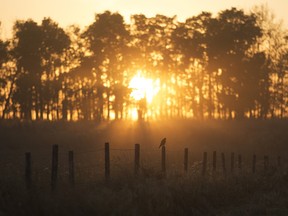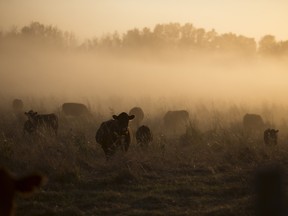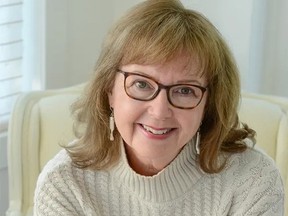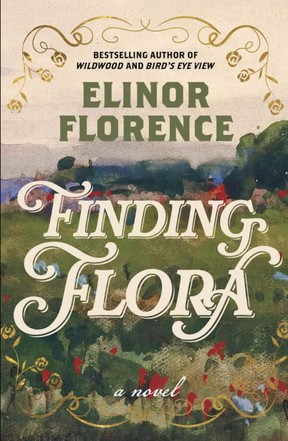'Alone on the Alberta Prairie': Edmonton-set novel on homesteading woman climbs charts
'I was amazed at how many women in Alberta were widows with children, who came here from the States or from Ontario or Quebec or overseas even, and obtained and proved up their own homesteads'

Article content
Reviews and recommendations are unbiased and products are independently selected. Postmedia may earn an affiliate commission from purchases made through links on this page.
Author Elinor Florence began research on her latest historical fiction book with one idea: she wanted to write a book about a woman, homesteading alone.
Finding the heart of “Finding Flora” was like finding a needle in a hay bale for Florence, a long-time Alberta resident who still has a stake in her family’s Prairie homestead.
Alberta women have come a long way, baby.
“The only people eligible to claim homesteads where the heads of households or single men; single women were barred, unlike the American government, which welcomed thousands of single women,” Florence said in an interview with Postmedia.
Under American laws, which could be discriminatory and downright racist in other respects, a single woman could claim and prove up her free homestead.
“I can only assume this was sort of a hide-bound traditional government that we had here that was still largely based on the British system, and they just did not want single women homesteading. They wanted single women to be marrying farmers and producing children in order to settle the West,” she said.
“I was amazed at how many women in Alberta were widows with children, who came here from the States or from Ontario or Quebec or overseas even, and obtained and proved up their own homesteads.”
Alone on the Alberta Prairie
With settings including Lacombe and Edmonton, Florence found a legal loophole for her heroine, a penniless Scottish bride with gumption crossing Canada by train in 1905 who gets a sinking feeling she’s made a terrible mistake and married an abuser.
“She jumps off the train in the middle of the night and finds herself alone on the Alberta Prairie about halfway between Calgary and Banff and she makes her way to a nearby cabin,” Florence said.

No spoilers — she found the loop hole (a government oversight) and her heroine was permitted to homestead on a 160-acre quarter.
Set in the year both Alberta and Saskatchewan became provinces, the book weaves in suffragettes and the Famous Five who got women declared “persons” in 1929, as well as the Canadian Pacific Railway (CPR).
She also pencilled in William Van Horne, president of the CPR, known for pushing through the transcontinental railway.
And there’s Frank Oliver — an Edmonton publisher, a flawed person who made a big impact on the formation of Edmonton’s landscape.
As Minister of the Interior, Oliver lobbied long and hard for Edmonton to become the capital.
He was in charge of the Homestead Act — and he didn’t believe in women homesteading.
He was also in charge of the Indian Act, and was unresponsive to the concerns of the Indigenous population.
When heroine Flora arrives at her homestead, she bonds with neighbours in the way many homesteaders in close-knit and interdependent communities often did.
One neighbour, a Metis horsebreaker named Jessie McDonald, is named for Florence’s own great-grandmother, who was herself Metis.
Among other memorable characters, two American immigrants who raised poultry, earning them the nickname “the chicken ladies.”
“They were inspired by a real couple, Miss Green and Miss Edgar, who lived near Alex and raised poultry,” Florence said.
The tale throws in a hostile government, a crooked homestead inspector, land speculators, and all the dangers inherent to pioneer life on the Prairies — along with the spectre of Flora’s abusive husband.

Personal history
Florence grew up on a farm outside North Battleford, Sask., the descendant of two Scotsmen who came to work for the Hudson Bay Company in Manitoba, and the Indigenous women they married.
She eventually earned a journalism degree and worked for several Alberta publications — and for the Edmonton Public Library, at what was then the Old Strathcona branch.
In her research, Florence consumed works from the Alberta Provincial Archives, and from experts on homesteading — people like Edmonton researchers Sarah Carter and Sandra Rollings-Magnussen.
She read more than 50 pioneer memoirs.
“I found (women’s) memoirs to be more interesting because men tended to write about weather and machinery and crops, and women wrote about the day-to-day challenges of running a household,” she said.
A break-out novel
While her previous books, were popular — Bird’s Eye View was a national bestseller and Wildwood was named by KOBO as one of the 100 most popular Canadian books of all time — Finding Flora is proving to be something of a break-out novel, even getting picked up by a book club in Waco, Texas.
It’s been chosen as a Heather’s Pick — “the writing is so deft you feel you’re part of the story,” the Indigo review reads — and she’s flying to Toronto on Sept. 10 to be interviewed by Heither Reisman at a ticketed event.
“This book has exceeded my wildest expectations,” Florence said.
“It’s very Canadian. And people have a renewed pride in their own country right now. So I think that’s helped. It’s about community, because the women form this very strong community, and I think that people, especially now, are looking for strong women overcoming adversity. And it’s not particularly dark,” she said.

Without spoilers, she says, “bad things happen, but it’s overall an inspiring read and it has a happy ending. I always write happy endings — I believe in happy endings she said.
“It’s very accessible. It’s easy to read. It’s entertaining and filled with action.”
Simon and Schuster liked it as well, apparently — they’ve offered her a contract for a new book.
“I can’t really say too much about what it’s about, but I will try to hit that sweet spot of western Canadian history,” Florence said.
Her books have always been about telling women’s stories.
Her first novel was about a Canadian woman who joins the Air Force in the Second World War and goes overseas, becoming an interpreter of aerial photographs.
“While I was researching that book, I interviewed as many veterans as I could, and especially as many female veterans as I could, and I wrote all their stories and published them on my website,” she said.
Her top 30 best interviews became an anthology of veteran interviews.
“I did that primarily for the veterans themselves, because it didn’t mean anything to them that they were on the internet, they wanted a book,” Florence said.
She’s lived in Invermere, B.C., close to grandchildren, for three decades, but “my heart belongs to the prairies. I think if you grew up on the prairies, it’s in your DNA, and it’s not something you can ever escape or want to,” she said.














Postmedia is committed to maintaining a lively but civil forum for discussion. Please keep comments relevant and respectful. Comments may take up to an hour to appear on the site. You will receive an email if there is a reply to your comment, an update to a thread you follow or if a user you follow comments. Visit our Community Guidelines for more information.